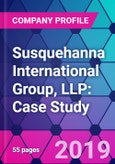The modern capital markets era begins in the mid-1970’s with the emergence and then convergence of three critical factors: derivatives, computers, and data feeds. Together, these factors symbolize the birth of the quantitative research revolution and beginnings of trade workflow automation, and therefore, propel the conception of some of the most consequential product developments, trading strategies and trading firms that the financial world has ever known.
A subset of the most notable players were the pioneers in the emerging listed options market. In some ways, they were also the pioneers in quantitative research – the “first quant shops” – developing advanced capabilities in the modeling of option pricing frameworks by way of computers and mathematics. Of these, the primary leaders included Chicago’s O’Connor & Associates (OCA), founded 1977; Chicago Research & Trading (CRT), founded 1977; and Hull Trading, founded in 1985. Philadelphia was strongly represented by Cooper Neff & Associates, founded in 1981; and, Susquehanna International Group (SIG), founded in 1987. There were a few others worth mentioning in this initial phase; John Stafford Jr’s, Stafford Trading and Lee Tenzer’s LETCO among them.
With only one exception, all of these pioneers were eventually acquired by banks, starting with NationsBank’s acquisition of CRT in 1992. OCA’s acquisition by Swiss Bank Corp. (SBC) followed shortly thereafter (with that union later becoming part of UBS when it merged with SBC in 1997). BNP acquired Cooper Neff in 1995. Goldman Sachs acquired Hull Trading in 1999. And, TD Securities, a unit of Toronto Dominion Bank, simultaneously acquired Stafford Trading and LETCO in 2002 following the dot.com options frenzy of 2001.
That exception – the only one of these firms to remain independent and privately held since inception – is Susquehanna International Group, otherwise known as “SIG.” Today, SIG is one of the most powerful players in listed derivative markets around the world, specializing in market making and proprietary trading across asset classes and regions, and including private equity and venture capital.
The story the report tells here – based on an assembly of publicly-available data and modeling of comparative companies to date – is one that has never been told quite like this before. Based on a deconstruction of their full series of holdings reports (on Form 13F-HR) and broker-dealer FOCUS reports (on Form X-17A-5), this story is based on Alphacution’s interpretation of some of the data that illuminates SIG’s business and trading strategies.
Structural Overview
SIG has been around for over 30 years. From experience, it seems that that the longer firms are successfully in operation the more complicated they tend to become, both in terms of the roster of legal entities and in terms of strategy mix. SIG is no exception. So, for starters, a structural outline of the company needs to be established in order to demonstrate which components have the greatest impact on the implementation of trading and investment strategies – and, which components can be set aside, for now.
From the regulatory data to which the analysts have access (which does not cover all activities of the company), there are numerous legal entities.
Contextual Overview
There are a few more concepts that the author wants you to be thinking about before you get into the strategy details:
This is the third in a series of case studies where the publisher is taking time to focus mainly on the business and trading strategies of market makers, proprietary trading firms, and quant-focused hedge funds. (The subjects of the first two case studies were Spot Trading, the Chicago-based proprietary options trading firm, and Citadel Securities, the Chicago-headquartered equity, ETF and options market-making firm – and an affiliate of the Citadel hedge fund operation.)
There is a reason that the publisher is currently focusing its modeling efforts primarily – albeit, not exclusively – on those firms that operate in closest proximity to the sources of liquidity. The logic goes like this: Based on its unprecedented and unparalleled research on technology spending patterns in trading and asset management and the subset of those firms that successfully compete by wielding technology, the author believes that the entire asset management ecosystem – of which market making and proprietary trading are a unique part – is being bifurcated between alpha investment vehicles and beta investment vehicles. This research has further highlighted the concept that alpha – or, outperformance – has a finite capacity. This means that there is a limited amount of capital upon which an excess rate of return can be earned. Furthermore, beyond the capacity level of capital to capture alpha, rates of return will decline until they reach the market rate of return – or, beta.
So, if the capacity of outperformance is finite and those who wield “industrialized” technical capabilities are best positioned to harvest that capacity, then we want to understand who these tech-wielding players are and try to quantify how much “alpha capacity” they are capturing. Most importantly, the concern is that a vast majority of the capacity of alpha is at risk of being “privatized” within the leading market-making, prop and hedge fund firms, thereby leaving only beta, beta-surrogates, and alpha-imposters accessible by the rest of us.
Table of Contents
Samples

LOADING...
Companies Mentioned
- Citadel
- G1 Execution Services, LLC
- Susquehanna International Group, LLP
- Susquehanna Securities



